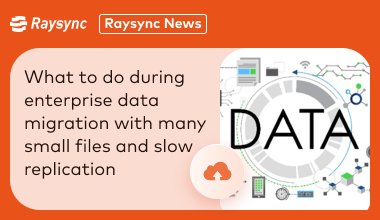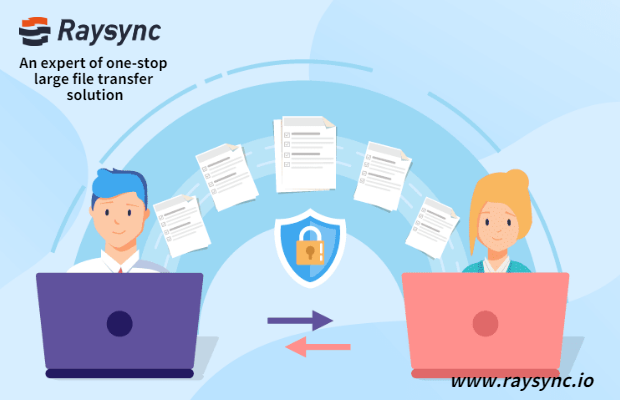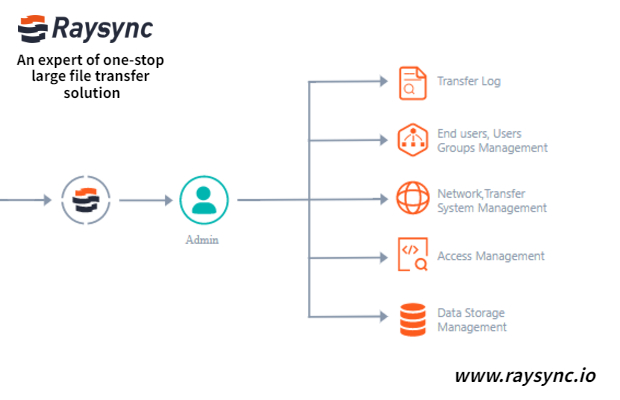How to do large volume data migration?
November 20, 2023Data migration is a crucial task when organizations are in the process of digital transformation. Whether it's from an old system to a new one, from a local data center to the cloud, or between different cloud providers, a smooth transfer of data is critical to business success. However, as the volume of data continues to grow, data migration becomes more complex and challenging. In this article, we will discuss the importance of data migration, the issues faced in migrating large volumes of data, and how Raysync can provide powerful solutions in this area.
Importance of massive Data Migration
Data is the lifeline of a modern business. It contains customer information, transaction records, production data, market insights and much more. Through data, organizations can make informed decisions, provide a better customer experience, reduce costs, increase revenue, and even drive innovation. As a result, data availability and integrity are critical to organizations.
In this context, massive data migration has become a necessary part of business growth. Organizations may need to move data from one system to another to adapt to new technologies, meet compliance requirements, or achieve greater efficiency. Regardless of the reason for the migration, data security and accuracy must be guaranteed.
The Challenges of Large Volume Data Migration
While the importance of data migration cannot be ignored, there are many challenges that organizations encounter when faced with large volume data migration. Here are some of the major issues:
Data Loss and Corruption: During large-scale data migration, any small mistake or negligence can lead to data loss or corruption due to the huge volume of data. This can not only have a serious impact on the normal operations of the organization but can also cause serious damage to the reputation of the organization. Therefore, ensuring data integrity and accuracy is the most important part of the data migration process.
Migration Time: For large volumes of data, migration can take a very long time. This means that during this time, organizations may need to face business interruptions or slowdowns. Therefore, it is crucial to have a detailed and well thought out migration plan to minimize the impact on the business.
Data Consistency: In the case of multi-source data migration, ensuring the consistency and accuracy of the data after migration is a very complex task. This requires organizations to perform rigorous checks and verifications during the migration process to ensure data accuracy and consistency.
Transmission costs: Data migration requires not only the purchase of new hardware and software, but also the investment of significant human resources for management and supervision. Therefore, organizations need to carefully evaluate the cost-effectiveness to ensure that the investment will pay off.
Compliance and security: During the data migration process, it is important to ensure that all data involved is compliant with relevant regulations and security requirements, such as GDPR. This requires encryption and protection of data to avoid any potential data leakage or security risks.
Raysync Big Data Cloud Migration Solution
Facing the above challenges, Raysync (private deployment solution, also can access public cloud, enterprise and social organization users can apply for free trial) has patented and certified high-speed transmission technology, which allows enterprises to migrate large amounts of data in a high-speed, secure, and reliable way with existing network only and also has the following advantages:
1. Support for multiple data migration scenarios: Support for multiple data migration scenarios from local data centers to triple clouds, from triple clouds to local data centers, from local data centers to off-site data centers of enterprises, etc., which provides more choices and flexibility for data migration.
2. Efficient Data Migration: When transferring large files and data between local IP and cloud data centers, high-speed transmission running at full bandwidth can be achieved, minimizing data migration time, and improving migration efficiency.
3. Reduced data migration costs: It can reduce the large amount of labor and time costs incurred by the distribution, integration, and deposition of enterprise data assets, to better utilize the resources to carry out other businesses.
4. Full data encryption transmission: Based on AES-256+ random high strength encryption algorithm encrypts the transmission to ensure the integrity of every piece of data. Comprehensive CVE vulnerability scanning technology is also built-in to ensure data security during transmission.
Sammary
In conclusion, data migration is an important data management activity, which is of great significance to enhance the data value and competitiveness of an organization. In the face of many challenges, especially in the scenario of large data volume, it is necessary to consider the security, compatibility, efficiency, and quality of data. Raysync is a professional large file transfer software with the advantages of high speed, security, management, and flexibility, which can meet the migration needs of various data within the enterprise or with external partners.
You might also like

Raysync News
February 2, 2024How to migrate and transfer a large number of small files efficiently. These small files on the server, although individually small in size, are often very slow to replicate during the migration process.

Raysync News
August 13, 2021Raysync provides ultra-fast, stable, and secure file collaboration solutions for enterprises, that ensure enterprises will safely and handily transmit their digital assets globally.

Raysync News
January 12, 2021Support local storage and three-party cloud object storage, with its own configuration and flexible switching;